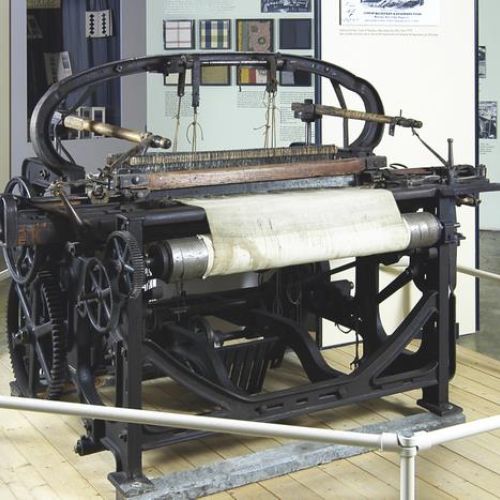Industry
along Akerselva

The Akerselva flows close past the museum. In the middle of the 19th century, it fueled the country's first industrial revolution. The exhibition focuses on various branches of industry: the workshop industry, the textile industry, the metallurgical industry, the food industry and the pharmaceutical industry.
The Industrial Revolution started in Great Britain in the 18th century. The factories produced consumer goods that were increasingly needed as the cities' population increased. The mechanical workshops made machines for the other factories.
The industrialization of the area by Akerselva was at its peak around 1900. Today, the old factory buildings are popular premises for apartments and the new cultural industry.

Loom (1850s)
The loom was made by Parr, Curtis and Medley in Manchester and was used at Hjula Weaver. The founder of Hjula, Halvor Schou, visited the British factory in 1855 and bought six looms from there. The machine was in use until 1927, and 600,000 meters of cotton fabric was woven on it. The wheel had more than a hundred looms in operation.

Steam Engine (1852)
The Ant's Mech. Verksted made the first Norwegian steam engines. The steam engine in our exhibition is from 1852 and has construction number 4. It is single-cylinder and made of cast iron. The side pieces are reminiscent of church windows and are in the Neo-Gothic style that was widely used in the industrial architecture of the time.
-77ab3642.jpeg)



